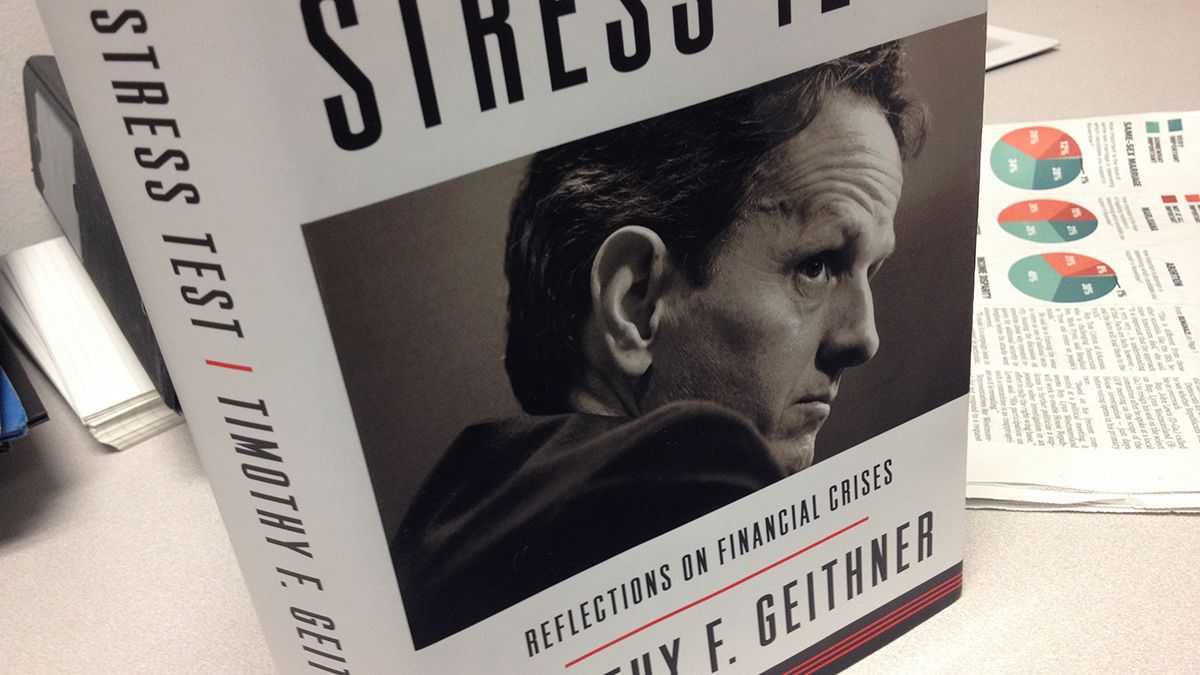He was one of the most influential individuals who prevented the US financial system from collapsing and who went on to become Secretary of the Treasury throughout President Barack Obama’s first term: Timothy Geithner.
Since he left office in 2013, he remained silent about his tenure. But now his memoirs have hit the shelves – and immediately made him a hot currency in Washington again.
“Stress Test”, as Geithner, 52, called his book, recounts the dramatic months of the global financial crisis, but also offers insights into the inner workings of Wall Street and the White House and into the mindset of the people at the helm.
After all, with no one had Obama more face-to-face crisis meetings in the West Wing during his first term than with the boyish-looking New Yorker.
Little of Geithner’s personality emerged when he was in office and some said he was an exhausted man when he left Treasury, disillusioned with Washington politics.
But the book is surprisingly personal and filled with revealing anecdotes. Geithner confides, for instance, that he actually didn’t want the Treasury job in the first place and that he tried on multiple occasions to resign, but Obama wouldn’t “liberate” him.
Prior to becoming the 75th US Treasury Secretary, he was president of the New York Federal Reserve starting in 2003. He served during the massive rise and collapse of home prices and the flood of foreclosures that ultimately led to the near-collapse of the global financial system.
In “Stress Test” he tells his version of why he and other Washington regulators made controversial decisions to bail out the big banks.
When the housing bubble burst in 2008, Geithner, along with Ben Bernanke, the chairman of the Federal Reserve, and Henry Paulson, George W. Bush’s last Treasury Secretary at the time, was charged with essentially saving the economy from sliding into the abyss.
They devised the plan to inject billions of the government’s dollars directly into the banking system, effectively turning taxpayers into shareholders of massive, failing institutions – with one notable exception: Lehman Brothers.
Geithner acknowledges for the first time that he was initially at odds with Paulson and Bernanke over whether to bail out Lehman Brothers in advance of the famous weekend meeting in which they sought to find a solution before the firm collapsed.
During those days, Geithner was little-known to the American public. It was only when he finally ascended to Treasury Secretary in 2009 that he became the public face of an economic recovery program that, in Paulson’s words, “polled worse than torture.”
Through it all, Geithner has maintained that saving the banks was the only way to protect the US economy, including its taxpayers. “The financial system had to be rescued, otherwise we would have had economic chaos”, he told attendants of a luncheon sponsored by Politico Magazine on Monday in Washington. “But it was messy”, he conceded.
Geithner’s comments about Obama’s leadership are in stark contrast to what the President’s enemies love to convey, namely that Obama is weak and unfocused. “He put relentless pressure on us during the crisis”, Geithner said. “And if you get that kind of pressure from the leader of the Free World, it is not comfortable.”
Over the years, Geithner has learned to live with heavy criticism from the political left and from the right, reflected in the reviews of his book. “That’s why I’m not reading the reviews, at least not now”, he said.
”When you have to make tough decisions that require choosing between ‘bad’ and ‘worse’, you make people unhappy.”
